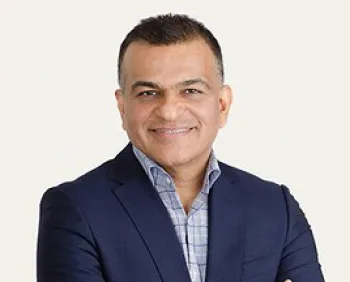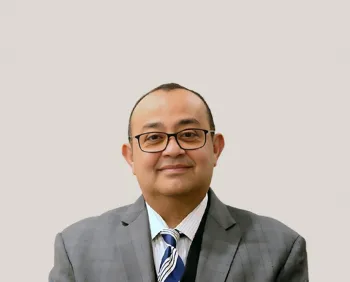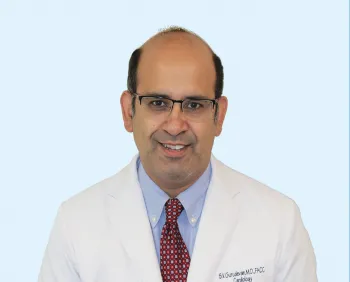
Road to Heart
Total vascular care Brooklyn
Total vascular care serves as the comprehensive goal of the team of vascular experts, nurses, and diagnostic technicians at the Sharmeen Sultan MD PLLC, Brooklyn NY.
We are a specialized, all-inclusive approach to the treatment of artery and vein diseases, including a multidisciplinary team that includes specialists with experience in treating vascular patients with the unique requirements they face as below.
- Varicose and other vein issues can be treated non-surgically.
- There is support, and guidance available to change one's lifestyle in order to reduce the risk of heart attacks and strokes.
- There are current treatments for complex total vascular care conditions like aortic dissections, carotid artery disease, abdominal aneurysms, and peripheral artery disease.
Vascular care Capability
Clinical productivity using new, cutting-edge techniques for total vascular care disease diagnosis and treatment has increased significantly as a result of the unique working environment.
Our specialist was moved to training as equipped himself, a total vascular care physician, at the Methodist De Bakery Heart Center in Houston, Texas, where underwent training from noted cardiologists ever since the physician was resolute to getting a cardiologist. He received the coveted H.Liston Beazley MD Student Clinician of the year prize in recognition of his commitment and hard work during his fellowship training. Martin Leon and Greg Stone. He then spent a further time there receiving significant preparation in peripheral/endovascular, intervention, and vascular surgery. He is a physician for special treatment in the disease of total vascular care in Brooklyn.
What signs are present of total vascular illness?
Since indication could be hard to distinguish, a routine vascular exam is the greatest manner to detect ailment in their initial and most curable steps. In some diseases, discomfort can range from mild to intense. Other vascular diseases, such as heart disease, can go unnoticed as far as a grave event like a heart attack or stroke happens. diseases of the peripheral vein, for example, can reason indications like chillness or a cold sensation in the spaces work for by the injured blood vessels.
Is there whatsoever I could able to do decrease my chance of vascular diseases?
Can I do anything to lessen my chance of developing vascular diseases? Getting screened for total vascular diseases care is another vital step in reducing your risks for grave facts. Some way of life changes, such as giving up smoking, eating a diet high in fiber and low in saturated fats, losing weight, and exercising enough may be able to lower the risk of developing vascular disease.
What is Total Vascular care Screening?
These exams can spot weakening or occultation in the blood vessels that supply the brain, as well as variations in blood pressure that could indicate occultation in the legs. Screening of vascular exam is a non-affected measure that uses blood pressure cuffs and ultrasound to measure the bloodstream in the veins all over the body.
Total Vascular Screening can be completed in about thirty minutes and consists of the following three screening procedures.
The largest artery in the body is examined during abdominal aortic screening, which can detect an aneurysm and determine its size.
•The ABI screening for disease for the peripheral vein in the veins of the feet or feet identifies the condition's presence and intensity.
Arteries narrowing, the most constant reason for stroke, is discovered during carotid artery screening.
What could you anticipate?
If test findings are unusual, your doctor can advise more analysis and investigation. You will be given findings when the test is finished that will suggest whether your screening was irregular.
It requires around thirty minutes to perform the investigation. You will have blood pressure cuffs put on your ankles. On your neck and belly, an ultrasonography transducer and a cold gel will be applied. The accredited total vascular care lab at Brooklyn sharmeen sultana MD PLLC services properly qualified vascular sonographers.
The vascular disease: how is it handled?
The removal and grafting of a blood vessel may occasionally require the use of more advanced surgical procedures in the treatment of vascular disease. According to the underlying cause, perhaps. Others require surgery, such as vessel disease treatments utilizing lasers, injections, or very small cuts. Medicines for blood pressure, for example, can be used to treat some diseases.
Peripheral vascular disease is similarly named peripheral arterial illness.
A circulation disorder that slowly worsens is identified as a peripheral vascular syndrome. Peripheral Vascular disease perhaps carried on by a blood vessel spasm, blockage, or narrowing. There may not be enough blood flow to the legs and these veins also supply other body parts including the brain. PVD may have an effect on any blood artery outside of the heart, including arteries, veins, and lymphatic vessels. Despite that, the feet and legs are typically impacted.
What grounds the peripheral vascular illness to develop?
PVD is most frequently caused by atherosclerosis, which is the accumulation of plaque inside the artery wall. Blood clots may progress on artery walls, further reducing blood vessel size and obstructing major arteries. Plaque lessens blood flow to the lamb's body.
An additional reason for PVD might comprise:
- A leg or arm injury.
- Unusual ligament or muscle anatomy.
- Disease.
The symptoms of peripheral vascular disease are as follows:
A blocked or narrowed artery may affect one or both legs, depending on its location. Intermittent claudication, a severe leg cramp that is relieved by rest, is frequently the initial symptom for people who do experience symptoms. Because the muscles don't need as much blood flow during rest, the pain goes away. Most people with PVD don't expose any symptoms.
PVD signs can resemble those of other illnesses. Discuss with your physician to get medical treatment. Other PVD signs and symptoms may include:
- Burning or aching pain that is felt while lying down, typically in the toes at night. When the legs are raised, there is pale.
- Severe discoloration with a reddish-blue tint.
- Limited mobility
- Deep pain when the artery is severely constrained or blocked.
- Tongues sporting substantial, opaque nails.
- Skin changes, such as reduced body heat or slender, brittle, sleek skin on the feet and legs. Slow pulses in the legs and feet.
- Gangrene, or dead tissue as a result of insufficient blood flow.
- Legs with less hair.
- Impotence.
- Wounds that are in proximity to pressure points, such as the heels or ankles, and that do not heal.
- Heavy, emotionless, or weak feeling in the muscles
The signs of PVD can resemble those of other diseases. It needs to consult a physician to take a diagnosis.
What is cardiovascular disease (heart disease)?
The term "heart disease," also known as the disease the of heart and blood vessels, covers a wide range of conditions, many of which are linked to atherosclerosis. If a blood clot develops, blood flow might stop. This could reason strokes and heart attacks.
An ischemic stroke is the most prevalent kind of stroke, which is brought on by a blood clot blocking a blood vessel that carries blood to the brain. A blood vessel when hemorrhaging occurs, the brain cell explodes and then strokes can happen. The main contributing factor is likely uncontrolled hypertension (high blood pressure). Heart attacks happen when a blood clot cuts off the bloodstream to a part of the heart. But after a heart attack, you do need to alter your routine. Your doctor will recommend medications and lifestyle changes based on the range of the injury to the heart and the level considered a risk factor for heart attack was cardiac disease.
Some stroke effects may be permanent in case a lot of brain cells die as a result of the stroke and not adequate oxygen and blood reach the brain. The good news is that some brain cells only experience a temporary malfunction and do not perish. Cells that have been harmed can grow back. This healing progression is the core of rehabilitation.
An unusual heart rhythm is named an arrhythmia. Different types of arrhythmias exist. The heart can beat abnormally, which might be much rapidly, or too gradually. Bradycardia is described as having a heartbeat of not as much of sixty beats per minute. The word "tachycardia" is used to indicate a heartbeat that is faster than one hundred beats per minute. An arrhythmia may affect how well the heart works. The body might not receive enough blood from the heart to meet its needs. Make arrhythmia more conscious of you.
Other Cardiovascular Diseases Heart failure may become worse if untreated. The heart does not stop beating when there is heart failure. If a loved one you care about has heart failure, it's imperative that you follow the physician's instructions.
Vascular disorders of the brain
A cerebral vascular problem is a condition: that restricts or inhibits blood flow to the brain either temporarily or permanently. Stroke is the most usual cause of disability in the United States and is a form of the cerebrovascular condition.
Risk issues may be fragmented into two categories: both those changeable and those that are not. Age, gender, race, and a personal or family history of stroke are examples of non-modifiable factors. For instance, males and African-Americans both have higher stroke dangers.
Symptoms and History: The signs and symptoms of a stroke comprise slurred or abnormal speech, nausea and giddiness, a severe headache, double or blurry vision, confusion, and numbness and weakness on one side, particularly in the face (facial drooping).
Body examination: The doctor will search for the previously mentioned symptoms.
Diagnosis: A doctor may ask for several tests to support identifying the cerebrovascular disorder. An example is brain angiography.
Management of Rehabilitation: The objective of rehabilitation is to help patients learn and practice skills that may have been lost as a result of brain damage from inadequate blood flow, or to teach them new ways to complete tasks. Physical medicine and rehabilitation physicians are in charge of a multidisciplinary rehabilitation team, which typically consists of a physical, occupational, and speech therapist. She or he can help stroke victims resume driving and working, get the necessary home equipment, and manage stroke-related complications like cramped post-stroke pain.
Vascular disorders, illnesses, and remedies
Your convenient time coverage for current inpatient total vascular care services in Brooklyn, New York, including consultation, diagnostic services, and endovascular treatment, is provided by the Sharmeen Sultana MD PLLC clinic.
Nephrology Total Vascular care Disease Review
The blood pressure-raising hormone renin plays a part in renal vascular disease. You can have too much renin in your blood, which raises your blood pressure if you have renal vascular disease, which decreases blood flow to the kidneys.
A person with renal vascular disease has abnormal blood flow to and from their kidneys. Among the health problems that can result from this are high blood pressure, damaged kidneys, and renal failure.
Renal artery aneurysm, which arises from a weak spot in the kidney wall of the artery, and renal atheroembolism, both have a connection to renal vascular disease.
Blood clots in kidney veins, renal artery thrombosis, and renal artery stenosis (RAS), which is a narrowing of the renal artery, are all examples of renal thrombosis.
Peripheral legs artery disease.
As a result, blood flow is decreased, potentially harming nerves and other tissues, Peripheral artery disease (PAD) can affect the blood vessels in the legs and feet.
Causes:
Insufficient blood and oxygen may be present even when the muscles are at rest if PAD worsens. Because of this, your legs cannot receive adequate oxygen and blood when they are working tougher as such in the course of exercise or walking. Additionally, in response to a need for more blood flow, the artery walls stiffen and lose their flexibility. This problem progresses as soon as greasy material (plaque) forms on the vein walls and narrows them. PAD is frequently brought on by atherosclerosis.
A typical illness is PAD. Men over fifty are most frequently affected, (mentioned below) while women can also have it. A person's risk goes up if they have a history of Strokes (cerebrovascular disease), Smoking, or both.
Dysfunction of renal;
High Blood pressure
Illness of Cardiovascular;
Blood sugar;
Abnormal blood cholesterol levels
How Does Atherosclerosis Occur?
Care your blood sugar pent up is the best way to escape these vascular complications. If failed to keep control of your diabetes or if you adopt healthy practices, you could experience serious health problems, Like
foot sores, blindness, a heart attack, a stroke, or severe kidney disease.
Care your blood sugar keep in control is the best practice to prevent these vascular problems. Your risk for artery hardening, coronary, high blood pressure, high cholesterol, and heart disease is increased by diabetes. You could also develop many vascular conditions that have been linked to diabetes. Diabetic vascular disease, also known as "hardening of the arteries is the term used to describe how diabetes leads to blockages forming in the arteries all over the body."
What are the symptoms and signs of diabetic vascular disease, and how can you prevent them?
The following symptoms and signs could be present if you have vascular problems brought on by diabetes.
- Pustules on the feet.
- A burning feeling or lifelessness in your hands or feet.
- A discomfort in your legs when you walk.
- Excessive blood pressure
- Chest pain
- Visual haze
- Floaters, which are moving spots in your field of vision.
- An unexpected gain in body weight or facial or limb swelling. •Urine that has a foamy appearance.
Why do diabetic vascular diseases develop?
Additionally, smoking, not exercising, being overweight, or eating a diet high in fat all raise your risk of developing diabetic vascular disease. You run a higher risk of developing the vascular disease as your diabetes worsens over time. Total Vascular diseases may a person stay risk of rising diabetes.
We are available to provide you with any information you require at the following address:
Sharmeen Sultana MD PLLC
1414A Newkirk Avenue,
Brooklyn, NY 11226
Contact us
718.759.6015

Dr. Vishal Kapur MD
Vascular
About Dr. Vishal Kapur, MD Dr. Vishal Kapur, MD. who is dedicated to being a great educationalist, researcher, and clinician has...
Read moreServices
Opening Hours
- Monday
- 9AM – 6PM
- Tuesday
- 9AM – 5PM
- Wednesday
- 9AM – 4PM
- Thursday
- 9AM – 6PM
- Friday
- 9AM – 4PM
- Saturday
- 9AM – 2PM
- Sunday
- Closed
Make an appointment
Some Frequently Asked Questions (FAQs)
The patients who were asked about the physician in question expressed high levels of satisfaction. The physician is known for providing attentive and careful treatment to her patients. Additionally, she sets aside ample time to examine the case history to explain the current state of the patient, so that it is easy for them to understand.
Absolutely! Click on the Orange banner on the right, that says "Make an Appointment".
Additionally, doctor’s Google business profile has a link to the appointment page, also.
Dr. Sharmeen, a dedicated Primary Care Physician, strives to foster good health and prevent illnesses within the Brooklyn community. Whether it's conducting routine check-ups, addressing common ailments like colds and coughs, or managing more serious symptoms, she offers comprehensive treatment, guidance, and collaborates closely with her team of specialists to ensure comprehensive care. Her services encompass a wide range of medical needs, including hypertension management, annual physicals, allergy consultations, pediatric care, arthritis, cholesterol management, obesity, respiratory infections, strep throat, rashes, minor injuries, and overall well-being for patients of all ages, from young children to adults.
Dr. Sharmeen Sultana's primary language of practice is English, she is fluent in Bengali, she understands and is able to communicate in Hindi and Urdu. In addition, there are Arabic and Spanish speaking members in the staff.
Doctor Sultana is family physician; her primary goal is to promote health and prevent diseases. She is a top-rated Primary Care Physician in Brooklyn. She provides comprehensive care for every patient regardless of age, gender, illness, or organ system. By collaborating with a team of specialists conveniently located within her practice, she seamlessly integrates and prioritizes multiple concerns, aiming to provide holistic and synthesized solutions for her patients.
While Dr. Sultana gladly accepts all major insurances, it is advisable to consult with the front desk attendant to obtain confirmation. As regulations and compliance requirements can undergo changes without prior notice, it's always prudent to verify the current status of accepted insurances.
Dr. Sharmeen Sultana has a rating of 4.50/5 from 164 patients (on health.usnews.com) who have reviewed her which indicates that most of the patients are satisfied with her services. However, there were areas where patients gave lower ratings regarding time spent on patients and exam thoroughness. Based on patient compliance and outcomes Dr. Sultana has a rating of 4 out of 5 indicating that patients will see her again and are satisfied with her treatment results. Dr. Sharmeen Sultana is rated 4 out of 5 as a cause of action, and we find the patients to be friendly and thoughtful. Dr. Sultana generally receives positive reviews from patients, although there are some differences in patient opinions. It's crucial to keep in mind that personal perspectives can differ, and seeking guidance from a healthcare expert from a wide range of sources is always a wise choice.
Our Doctors
Our Doctors

Family Physician, Primary Care Doctor
Dr. Sharmeen Sultana
I am dedicated to keep the community healthy through preventive care.
Office Hours
- Monday
- 9AM – 6PM
- Tuesday
- 9AM – 5PM
- Wednesday
- 9AM – 4PM
- Thursday
- 9AM – 6PM
- Friday
- 9AM – 4PM
- Saturday
- 9AM – 2PM
- Sunday
- Closed



